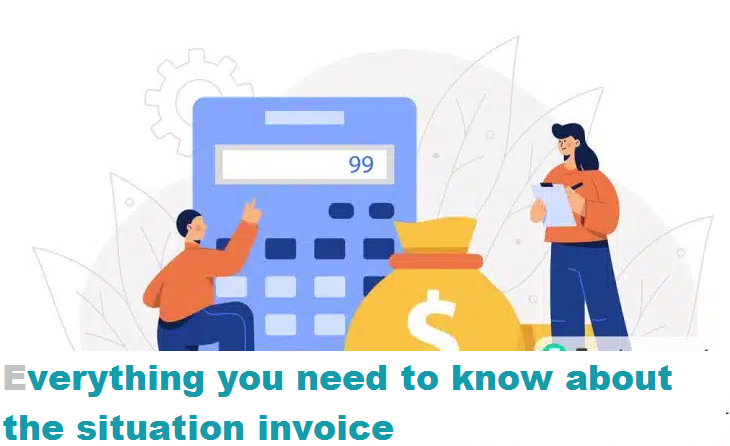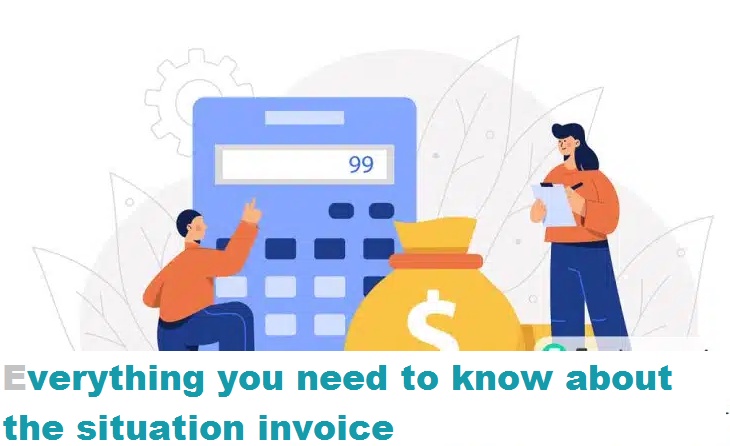The status or progress invoice is an accounting document used mainly in the construction and craft sectors and certain service companies.
The situation invoice concerns construction sites or services carried out over the long term. Thus, you can use this document to stagger the payments according to the progress of the work or the performance of the services.
Here's everything you need to know to use and create a Situation Invoice.
Definition of the situation invoice
What is a status invoice ? This specific accounting document , also called progress invoice, will be useful to you if you provide long-term services .
Indeed, the progress invoice is used to stagger the payments according to the progress of the work and comes in the form of several invoices.
Invoices will be made periodically according to the contract established between your company and the customer. Each amount is calculated according to the percentage of the progress of the work or at the end of a specific service.

How to calculate a situation invoice?
You can calculate the amount of a progress invoice in two ways:
- Calculation of each service according to the total amount of the invoice, according to a percentage.
- Calculation divided into lots or markets that correspond to a particular service.
The calculation by batches or contracts is particularly useful when several service providers are involved on a site or on a project. Each subcontractor can then invoice his lot according to the progress of the project to the ordering company.
In this case, it is the ordering company that will be responsible for creating and giving the global invoice to the customer.
On this global invoice must appear the details of the progress of each of the lots as well as the percentage of progress for the project as a whole.
What is the difference between the status invoice and a deposit?
The situation invoice and the deposit both allow you to generate cash to start the services, but this is the only common point. The deposit is a one-time payment made before delivery or the start of a transaction.
The deposit guarantees the transaction with the payment of part of the total amount of the service. The deposit invoice is used to certify this payment and the deposit must appear on the estimate.
The situation invoice makes it possible to stagger payments over the duration of the work or the performance of the service. The progress invoice is therefore issued during the execution of the work or the project, unlike the deposit invoice.
Mandatory information and production of a situation invoice
The mandatory details of a situation invoice are the same as for a classic invoice with a few additional specificities.
You must mention the same mandatory information as on a classic invoice, namely:
- The identity of the seller with name, address, company name, SIRET number and place of registration;
- VAT identification number of the seller and the customer, the legal structure and the amount of share capital;
- The customer's contact details;
- Details of the service with quantity, description, VAT rate;
- The total amount to be paid;
- Payment terms ;
- Late penalties .
To these mentions must be added specific mentions to the situation invoice:
- The number of the progress invoice ;
- The reference estimate ;
- The designation of lots or markets if you use subcontractors;
- The degree of progress of the work or the project as a whole;
- The degree of progress of the previous situation invoice and the amount still to be paid;
- The amount of the deposit invoice , if there has been a deposit.
The closing invoice: what is it?
Once all situation invoices have been created and sent to the customer, you must create a closing invoice . This is the final invoice which groups together all the situation invoices.
This invoice must include:
- The mandatory information present on a classic invoice;
- The list of deposit and situation invoices issued during the service;
- The amount excluding taxes;
- The amount of VAT;
- The amount remaining to be paid including VAT.
If you are carrying out a long-term project or work, you will therefore need to create a closing invoice summarizing all the progress invoices issued during the completion of the work. The closing invoice closes the contract and the relationship between you and your client at the end of the service.
Why use a situation invoice?
The main purpose of a status or progress invoice is to generate cash before the work is carried out.
The staggering of payments allows you to pay for labour, subcontractors and materials or any expense necessary to carry out the service.
Indeed, the realization of a project often requires expenses, this is why certain trades require payments of installment or the realization of invoices of situation.
The sectors of construction or web, communication or development agencies are particularly concerned by situation invoices. Construction sites or projects can last several months and then require the creation of situation invoices.
Intermediate payments allow service providers to avoid cash flow gaps and ensure the sustainability of your company.
The situation invoice also makes it possible to make a regular update on the progress of the project according to the established schedule and makes it possible to ensure a good follow-up of the accounts.
Our advice for creating a situation invoice
To save time in your invoicing, consider using invoicing software like Facture.net .
You will be able to follow the progress of the work by creating your status invoices online in a few clicks. Electronic invoices are quick and easy to generate and make managing your accounts easier . You can automate the invoicing process to optimize your time and focus on completing your projects.
If your company carries out long-term projects , the status invoice will allow you to stagger payments, generate cash and closely monitor your accounts during the project.


No comments yet